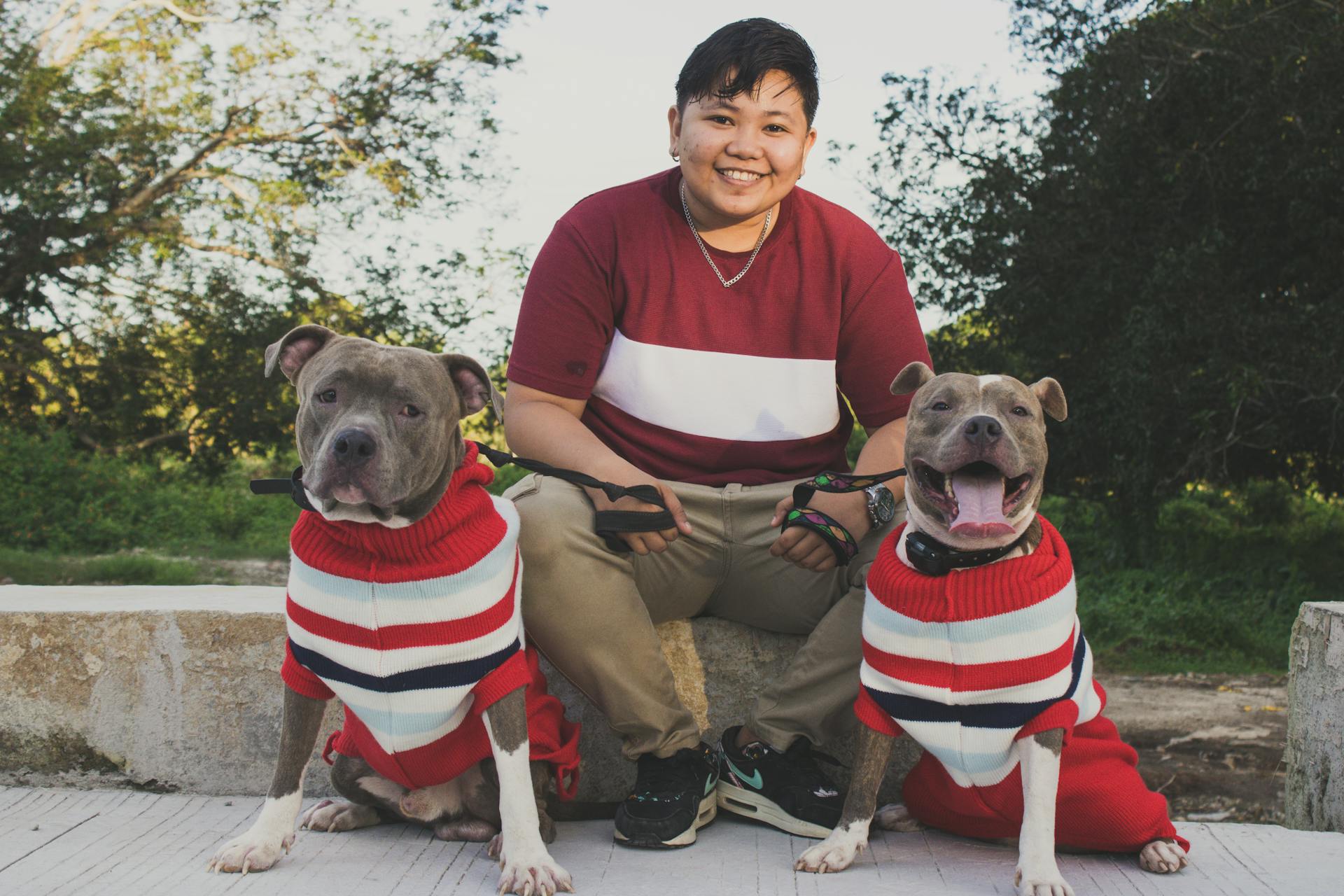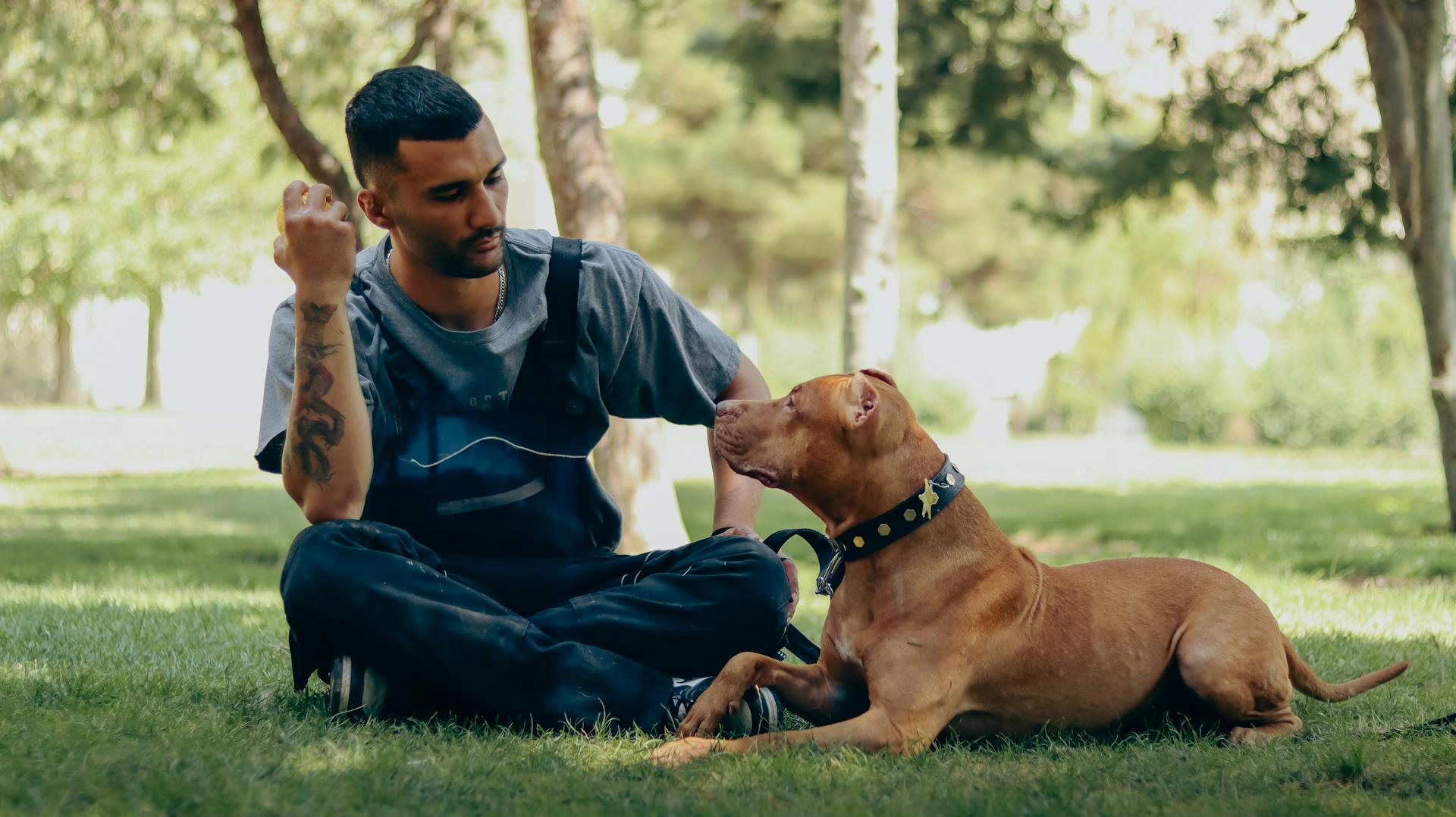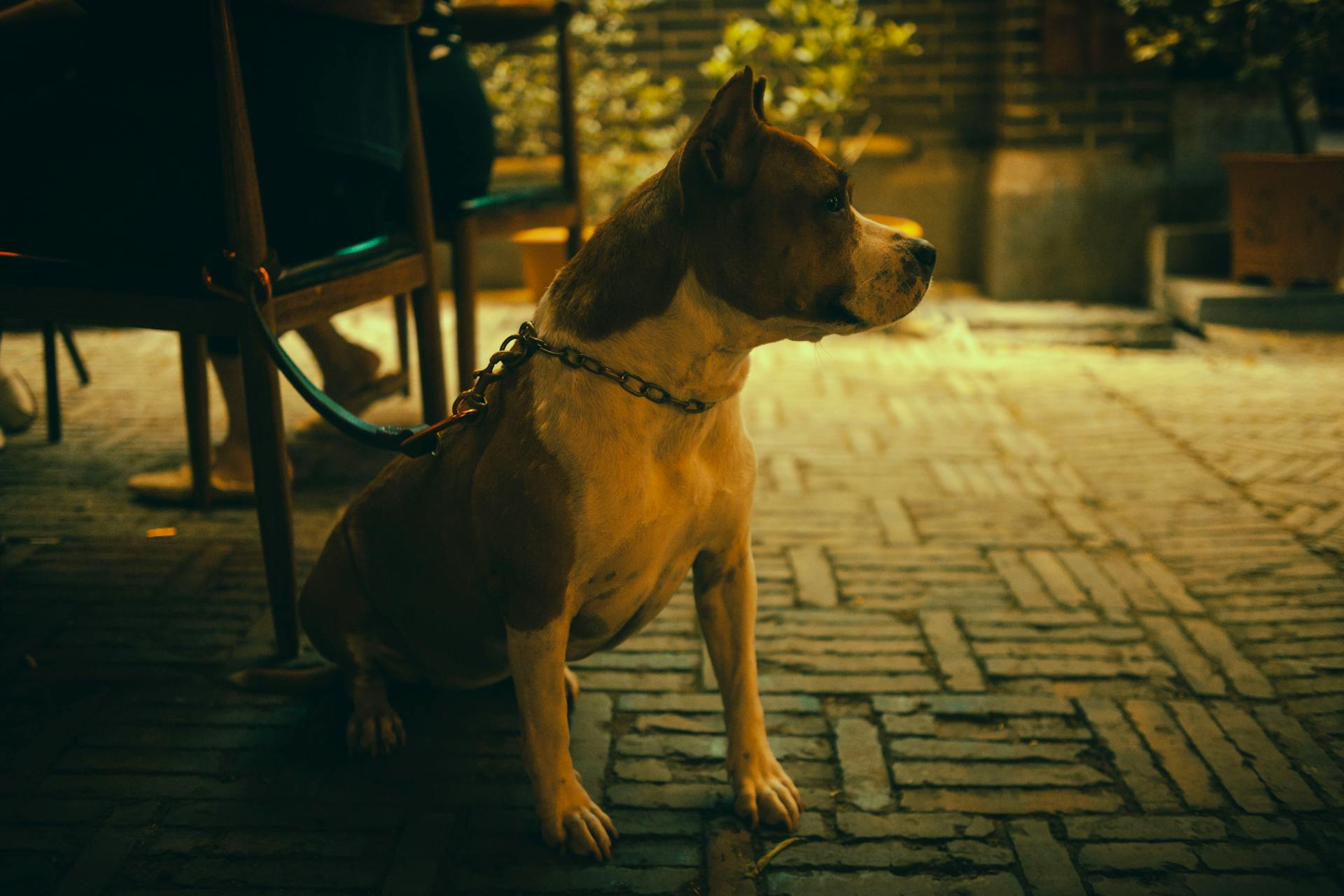
Pit bulls are one of the most common breeds found in shelters across the US. According to the ASPCA, nearly 1 million dogs enter shelters every year, and pit bulls make up a significant portion of that number.
Breed-specific legislation, or BSL, has been a major contributor to the pit bull shelter problem. By banning or restricting pit bulls in certain areas, owners are forced to surrender their pets or risk fines and even jail time. This has led to a surge in pit bull intakes at shelters.
The media's portrayal of pit bulls as aggressive and violent has also contributed to the breed's negative image. This stereotype is largely based on isolated incidents and has led to a widespread misconception about pit bulls. In reality, pit bulls are known for their friendly and affectionate nature.
Unfortunately, this stereotype has real-world consequences for pit bulls in shelters. Many potential adopters are deterred from adopting a pit bull due to fear of their behavior. As a result, pit bulls often spend longer periods of time in shelters, waiting for a forever home.
Check this out: What Is the Largest Breed of Pit Bulls
Why Pit Bulls End Up in Shelters
Pit Bulls are often misunderstood and face a bad rap, which leads to breed-specific legislation in some areas, banning them and forcing families to surrender their pets.
The media frequently stigmatizes Pit Bulls, focusing on the breed in stories about dog attacks without proper identification, further perpetuating the negative image.
Unregulated breeding practices, also known as "backyard breeding", contribute to the surge in Pit Bull populations, particularly in the southeastern region where the warm climate facilitates year-round breeding.
Limited resources and affordable veterinary care options in the Southeast lead to pet abandonment or surrender, exacerbating overpopulation.
For some, owning a Pit Bull is a status symbol, but the novelty can wear off, and responsibilities can pile up, leading to surrender or abandonment.
Here are some staggering statistics on Pit Bull euthanasia rates:
Pit Bulls face a new challenge once they're in the shelter: extended stays. Negative public perception and breed restrictions contribute to slower adoption rates, lengthening their time in the system.
Myths and Misconceptions
APBTs are often misunderstood, and one common myth is that they're prone to human aggression. However, this is not true - they're actually very unlikely to show aggression towards people.
Public opinion about Pitbulls is often clouded by fear and misinformation. This leads to misconceptions about the breed, such as believing they're inherently aggressive.
Many people are surprised to learn that Chihuahuas are more common in shelters than Pitbulls, despite Pitbulls' imposing stature and powerful physique.
Curious to learn more? Check out: Are Pit Bulls Bred for Aggression
Bulls as Shelter Dogs are Less Likely to be Rescued
Unfortunately, Pit Bulls are often overlooked by animal rescues due to their breed stigma.
Rescues are selective about which dogs they take on, prioritizing those that are more adoptable.
This means that Pit Bulls, who are already at a disadvantage, are often left behind.
In fact, only one in 600 Pit Bulls in shelters will find a forever home.
It's estimated that 1 million Pit Bulls are euthanized every year, which is nearly 3000 Pit Bulls every day.
The reality is that many animal rescues are overwhelmed with requests to save dogs, and they can only take on so many.
As a result, Pit Bulls are often left to fend for themselves, with little hope of rescue.
Intriguing read: How Often Do Pit Bulls Attack
Bad Labeling

Bad labeling is a major issue when it comes to Pitbulls and other breeds. It's estimated that breeds are correctly identified only 27% of the time, which means that most dogs are misidentified.
Shelter staff and veterinarians are often poor at correctly identifying dog breeds, which can lead to incorrect labeling. This is because genetic testing is not practical for most shelter dogs.
A study found that breed identification for a given dog was labeled correct if a breed containing at least 25% of a dog's genetic makeup was selected. The results were eye-opening:
- Breeds were correctly identified, on average, only 27% of the time.
- 6% of the dogs weren’t correctly identified at all
- 22% only had their breed identified 1% of the time
- Only 15% of the dogs were correctly identified more than 70% of the time.
This misidentification can be deadly for Pit mixes, as they are often euthanized due to being labeled as Pitbulls. On the other hand, many dogs with Pit Bull genetics are misidentified as other breeds.
Treat Each Shelter Dog as an Individual
Losing your family, even a not-so-good family, is traumatic for any dog.
Pitbulls often become highly frustrated in the confinement of a shelter, which can lead to behavior and vocalizations that look like aggression.
Chihuahuas often shut down when separated from their loved ones, shivering in a corner and refusing to interact.
You're seeing a dog on one of their worse days when you're considering a dog to adopt, foster, or volunteer with.
Go slowly, be patient, and bring yummy treats to let each dog reveal their unique personality.
Here's an interesting read: When Do Pit Bulls Stop Growing
Breed-Specific Issues
Pit Bulls are often misunderstood and have a breed-specific history that contributes to their high presence in shelters. Unfortunately, this history of dogfighting and breeding for fighting ability makes them more likely to display dog aggression.
The breed's history of being used for fighting and its current behavior are closely tied. Pit Bulls were bred to bite and hold onto bears, bulls, and other large animals, and later to fight each other when this practice was outlawed. This means that some Pit Bulls may be more likely to display dog aggression.
However, it's essential to note that not all Pit Bulls will display dog aggression, and being labeled a Pit Bull doesn't guarantee it. In fact, Pit Bulls tend to be less aggressive towards people than many other breeds.
For your interest: American Pit Bull Terrier Female
A significant percentage of dogs coming into shelters are labeled Pit Bulls, with estimates ranging from 33% to 65% in large cities. This high number is partly due to the breed's popularity in dogfighting and the subsequent abandonment of dogs by their owners when they can no longer fight.
Here's a breakdown of the breed-specific issues surrounding Pit Bulls:
- High likelihood of dog aggression due to breed history
- Difficulty in finding adopters due to breed stigma
- High euthanasia rates in shelters (estimated 1 million Pit Bulls euthanized every year)
Bull-Type Dogs
Bull-Type Dogs are often associated with dog fighting, and unfortunately, this ancestry can increase the likelihood of dog aggression. Unfortunately, dog fighting is terribly common.
The number of people participating in dog fighting in the United States is estimated to be in the tens of thousands. This means that a dog in a shelter may have come from fighting parents or at least one fighting parent, even if they have never been fought.
Pit Bulls, a type of bull-type dog, are often euthanized in large numbers due to their breed label. Around 33% of dogs coming into shelters are labeled Pitbulls.
For another approach, see: American Bull Dog Pit
In large cities, as many as 40%-65% of dogs entering shelters are Pits. This can be devastating for these dogs, as they often have a hard time finding a forever home.
Only one in 600 Pitbulls in shelters will win the lottery and find a forever home. This is a stark reality for these dogs, who are often euthanized due to their breed label.
Around 1 million Pits are euthanized every year, which is nearly 3000 Pitbulls every day. This is a heartbreaking statistic that highlights the need for change.
You might like: Pit Bulls Euthanized
Southeastern Shelters
In the southeastern United States, pit bull mixes are overrepresented in shelters. The abundance of pit bulls in these shelters is a stark reality.
Public perception plays a significant role in this phenomenon. The media often stigmatizes pit bulls, focusing on breed-specific stories about dog attacks without proper identification, which leads to breed-specific legislation (BSL) in some localities.
The southeastern region's warm climate facilitates year-round breeding, contributing to a surge in pit bull populations. This, combined with unregulated breeding practices and a lack of spay and neuter awareness, exacerbates the problem.
Limited resources in the Southeast can lead to pet abandonment or surrender. The lack of affordable veterinary care options, including spay and neuter services, further contributes to overpopulation.
In shelters, pit bulls face extended stays due to negative public perception and breed restrictions. This slows down adoption rates, lengthening their time in the system.
The SPCA Albrecht Center is working to educate potential adopters on responsible pet ownership, aiming to lower surrender rates.
Breed History
The American Pitbull Terrier has a complex breed history that's worth understanding. Originally bred to fight animals and other dogs in a ring, they also became favorites of ranchers and farmers for tasks like catching feral hogs and cattle.
Their history of dogfighting still influences the breed today. Despite their diverse roles, aggression towards humans is uncharacteristic and results in removing dogs from the breed pool.
The breed was developed to be strong, confident, and highly trainable, making them great family dogs and loving companions to children. They're also exceptionally athletic, which means they're very adept at climbing fences.
However, most American Pitbull terriers display some degree of dog aggression, combined with a powerful, muscular body and athleticism, making them not right for every owner. This characteristic requires careful handling and socialization.
The breed's history is closely tied to their potential behavior, with some owners noting that well-socialized American Pitbull Terriers can be less aggressive towards people than other breeds.
Check this out: Pitbull American Terrier
Dog Fighting
Dog fighting is a serious issue that affects many dogs, with estimates suggesting tens of thousands of people participate in the United States.
The dog-fighting world produces a lot of homeless dogs, with breeders often discarding them as soon as they're no longer useful.
Fighting dogs on the streets is a common component of urban crime, with online communication making it easy for dogfighters to organize fights and maintain genetic records.
Dog fighting is a major contributor to the number of Pit Bulls in shelters, with some being fight dogs that were injured, refused to fight, or lost their usefulness to their owners.

A dog's ancestry can play a role in determining their likelihood of showing dog aggression, with those further from dog fighting being less likely to exhibit this behavior.
Unfortunately, dog fighting is a common practice that's hard to track, but it's thought to be rebounding after a decline in the 1990s.
The industry surrounding dog fighting has no regard for animal life, leading to many dogs being discarded and ending up in shelters.
Myth: Good with Dogs Now ≠ Good Later
Pit Bulls have a late maturity, and their breed-related instincts and behaviors become strongest as they mature. This means a Pit Bull that's friendly with dogs at 7 months old may suddenly show signs of intolerance towards unfamiliar dogs around two years old.
Spaying or neutering a Pit Bull may help prevent their genetic urge to fight another dog from taking over. Sudden aggression at maturity is, in fact, perfectly predictable for the APBT.
For the Love of a Bull
Pitbulls are the most common dogs in municipal animal shelters nationwide, making up around 33% of dogs coming into shelters. This is largely due to their association with dog fighting, which has led to a staggering 93% euthanasia rate for Pit Bulls.
The underground dogfighting industry has a devastating impact on Pitbulls, keeping them in isolation and neglect between pitting them against each other in vicious fights.
Many people are unaware that being labeled a Pitbull can have disastrous consequences for the dog, with only one in 600 Pitbulls in shelters winning the lottery and finding a forever home.
Shelters are often overwhelmed with Pitbulls, with some euthanizing them immediately upon intake. In fact, it's estimated that 1 million Pits are euthanized every year, that's nearly 3000 Pitbulls every day.
Here's a breakdown of the statistics:
The shelter system is not equipped to handle the vast numbers of Pitbulls, and anti-Pitbull legislation only adds to the problem, resulting in thousands of Pitbulls being euthanized each year.
Pitbulls are often misunderstood by their owners and potential adopters, but they are actually one of the most even-tempered, human-loving dog breeds, especially noted for their affection towards children.
Related reading: Why Are Pitbulls Called Pit Bulls
Sources
- https://ycspca.org/news-events/blog.html/article/2024/01/24/breaking-down-pit-bull-type-dogs
- https://www.letlovelive.org/uncategorized/why-pit-bull-mixes-dominate-southeastern-shelters/
- https://pittieslovepeace.com/reality-pit-bull-adoption/
- https://rescuedoghome.com/why-are-there-so-many-pit-bulls-and-chihuahuas-in-shelters/
- https://www.foundanimals.org/for-the-love-of-a-pitbull/
Featured Images: pexels.com


